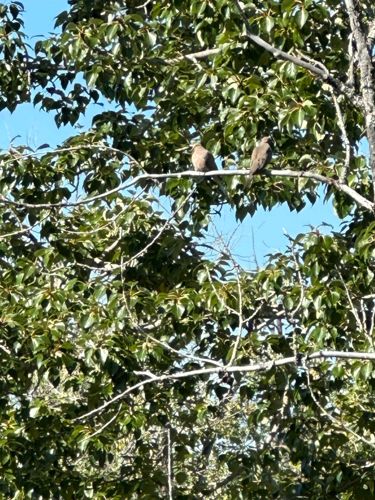Mourning Dove
Classification: Class: Aves, Order: Columbiformes, Family: Columbidae, Genus: Zenaida, Species: Zenaida macroura

Brief Description
The Mourning Dove is a common and widespread bird known for its distinctive mournful cooing sound. They are slender, medium-sized birds with a small head and a long, tapered tail.
Additional Information
- Region of Origin: North America (widely distributed across the continent), extending into parts of Central America and the Caribbean.
- Typical Sighting Period: Year-round in most of their range, though northern populations may migrate south for winter. They are particularly active and visible during breeding season from spring through late summer.
- Plumage Details: Adult Mourning Doves have light brownish-tan plumage on their upperparts and a lighter, grayish-buff on their underparts. They feature black spots on their wings and behind the eye, a bluish orbital ring, and a iridescent pinkish-purple patch on the side of the neck, more prominent in males. The tail is long and pointed, with white tips on the outer tail feathers.
- Ecological Significance: Mourning Doves are important seed dispersers, consuming seeds from a wide variety of plants and contributing to plant propagation. They are also a significant food source for various predators.
- Conservation Status: Least Concern (IUCN Red List)
- Observation Tips: Look for Mourning Doves foraging on the ground in open areas, often near bird feeders. Listen for their characteristic cooing sound, which can often lead you to their location. They are common in suburban and urban environments as well as rural areas.